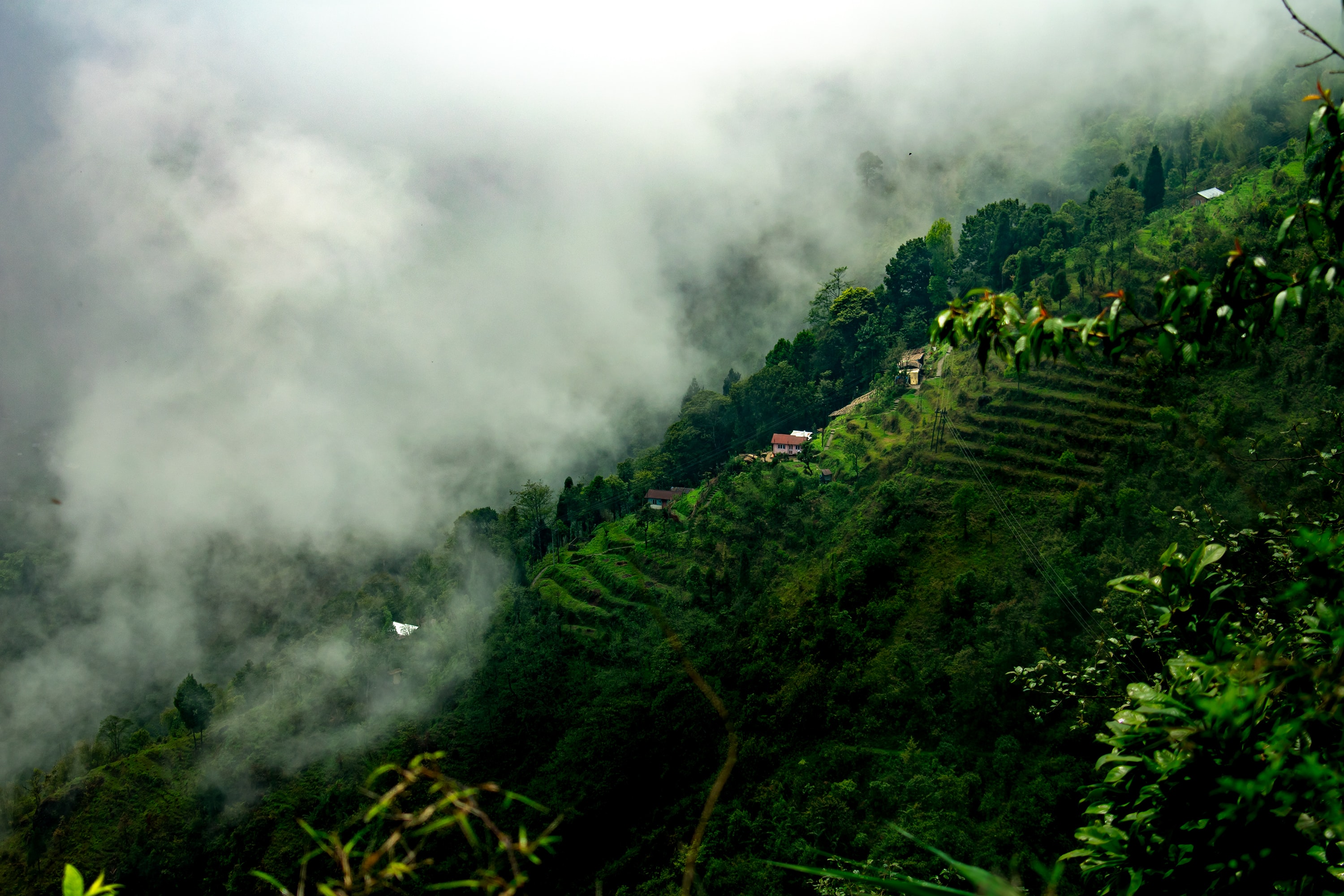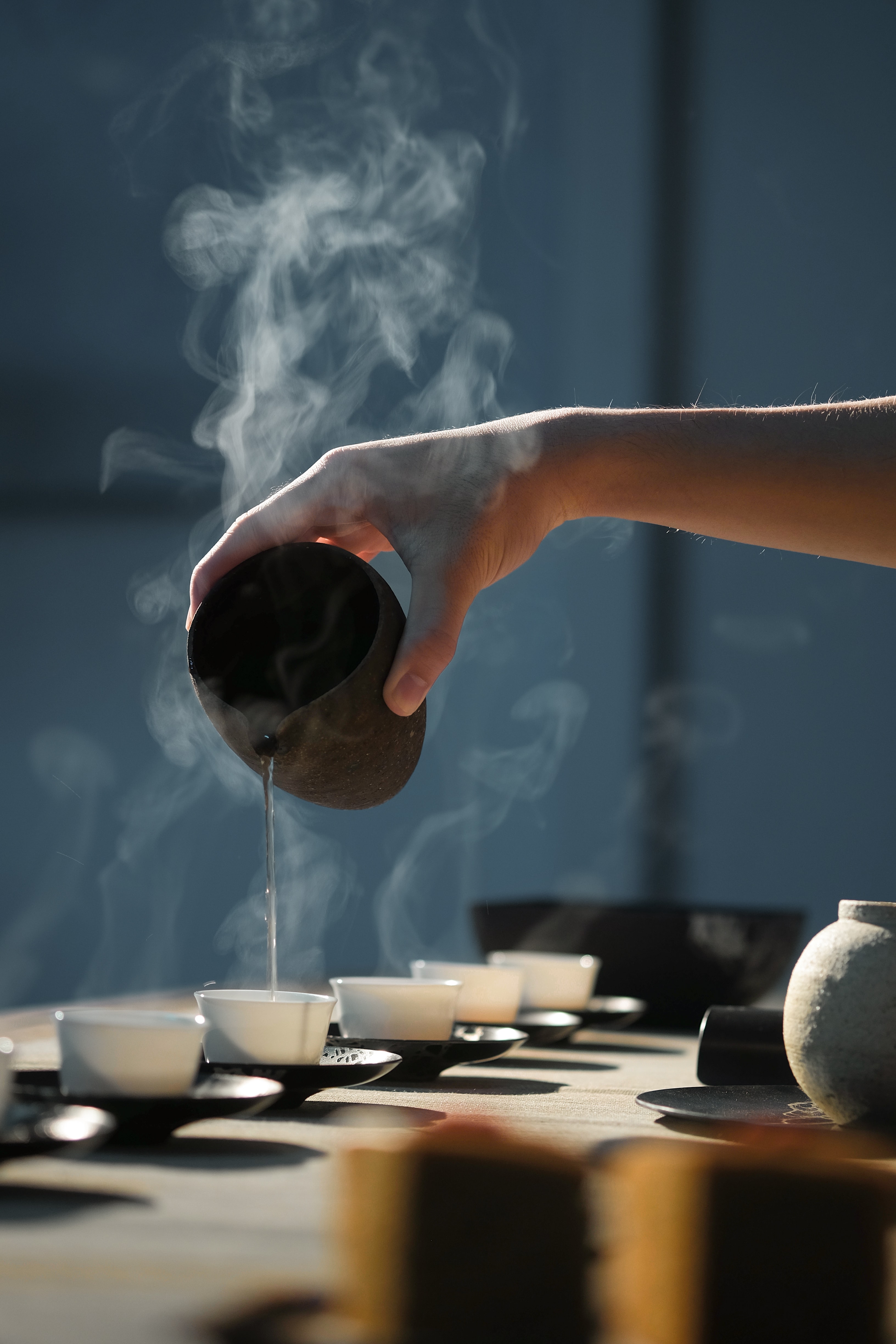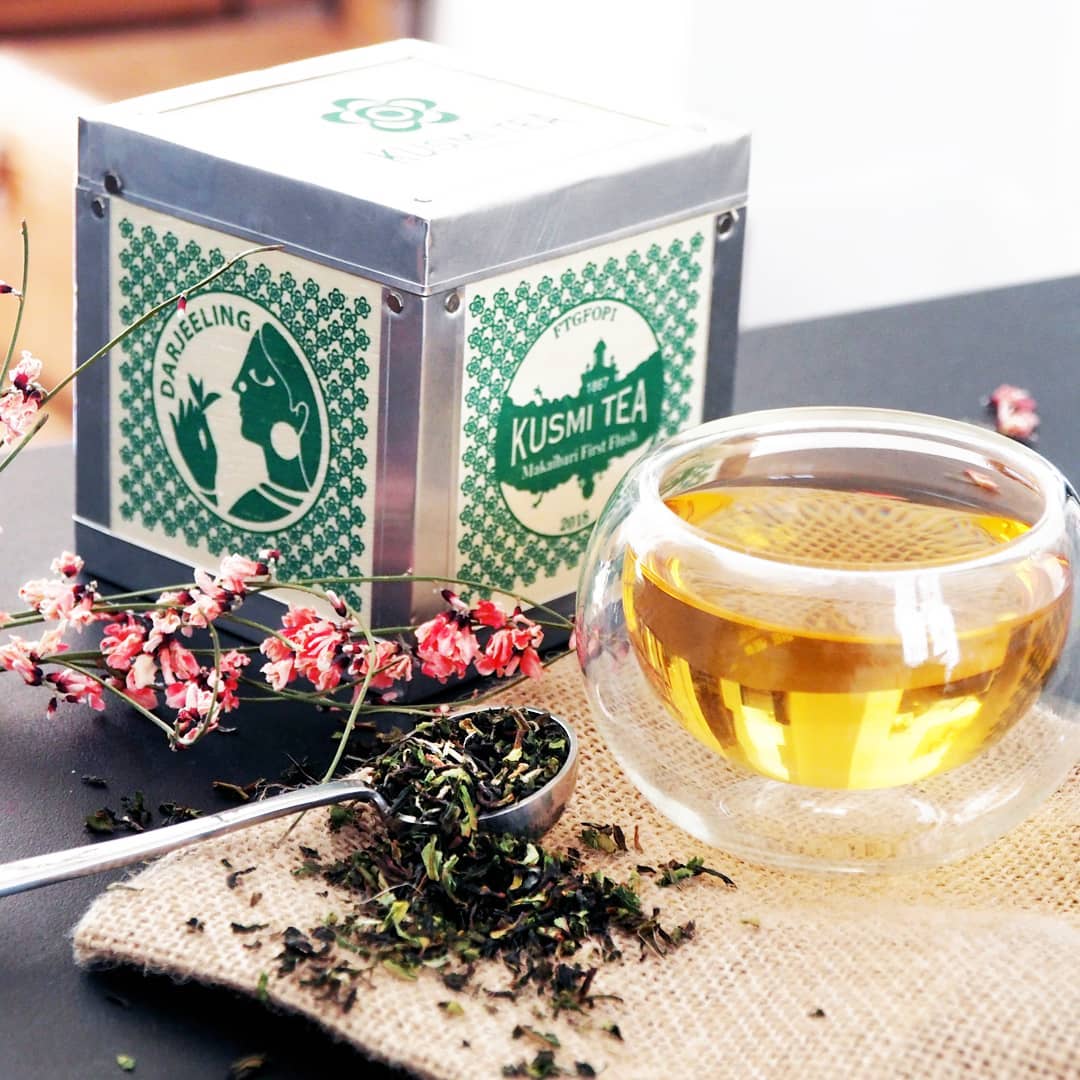Calling all black tea afficionados! You’re going to love Makaibari tea, a rare, precious Darjeeling tea with delicate green notes. Every spring, Makaibari tea is freshly harvested according to the strictest traditional methods. This Darjeeling tea is then packaged in small cases ready to be infused. Come with us to India near the Nepalese border to learn more about this exceptional tea…
What is Makaibari black tea?
The Makaibari tea estate, whose name means “cornfield” in Nepalese, is found on the Himalayan slopes on the way to Bhutan and Tibet. The eponymous tea has been grown there with care and passion since 1859. In this lush green region of India, fauna and flora live together in harmony, creating the finest-quality soils in which the tea bushes grow. The result is a world-renowned tea with a distinctive flavor.

A renowned Darjeeling tea
Makaibari black tea is a certified Darjeeling tea. It comes from a territory with a Darjeeling Protected Geographical Indication (PGI) label, and complies with a particular list of specifications. This PGI is the only one of its kind in the tea world, and has been recognized by the European Union since 2011. Aside from the sublime flavor of its tea, the Makaibari estate is also known for its unique approach to protecting local biodiversity.
Makaibari: Darjeeling tea plantations, and so much more!
This estate has been directed since the 1970s by Swaraj Kumar Banerjee, better known as Rajah. This tea planter and researcher has devoted his life to protecting and improving soil quality. Rajah is striving to preserve the diversity of local flora and flora. With this in mind, the 1,600 acres of the gardens are not planted with a Darjeeling monoculture. Part of the space is allocated to forests and their natural wealth. These areas contain numerous species such as Bengal tigers, leopards, monkeys, and birds such as the great hornbill. Both certified and grown with biodiversity-friendly methods, Makaibari tea is a true success story! Thanks to this approach, you can enjoy this delicate black tea without any “bitter aftertaste.”
Darjeeling tea: an exceptional Indian brew
Makaibari tea is the king of Darjeeling – a family of teas renowned across the world for their incredible quality.
Why is this Indian tea so precious?
The unique, sophisticated flavor of Darjeeling has seen it nicknamed the Queen of the hill.. Just like the famous sparkling wine, Darjeeling tea also has its own protected designation. Thanks to this certification, only teas from this region can be considered true Darjeeling. And while we’re on the subject, which is the most sought-after Darjeeling tea?
The “First Flush” harvest
The First Flush is the name for the initial leaves grown by Darjeeling tea bushes. This first harvest is carried out at the start of spring every year after the tea bushes have hibernated for five months. The very first shoots are carefully picked by hand to create a light, delicately fragrant tea. Delicious!
SFTGFOP: top grades for Darjeeling tea
“Special Finest Tippy Golden Flowery Orange Pekoe.” This acronym indicates the quality and condition of the harvested leaves. Simply put, the more letters there are, the more exceptional the tea. Each letter corresponds to an adjective, which are all referred to as grades. SFTGFOP grade is of extraordinary quality, and usually reserved for the best Darjeeling teas from the first harvest. We did say you were going to meet a prestigious figure! To get the most out of this sophisticated tea, we recommend preparing it according to the tried-and-tested methods…
Preparing Indian Darjeeling tea
Darjeeling black tea is exclusively comprised of young shoots found at the tips of the tea bush – more specifically the bud and the two smallest leaves. Preparing it therefore requires a gentle touch to enable the precious leaves to release their full, delicate aromas.

Darjeeling brewing time and temperature
Each tea has an ideal water temperature and brewing time. The quality of the infusion will depend on the temperature of the water. If the water is too cold, the Darjeeling tea will not brew properly. In other words, it will not release its compounds, and therefore its fragrances and flavors. If the water is too hot, you may damage the taste of this rare tea. High temperatures can actually magnify the tea’s bitterness and astringency. Keep an eye on your watch or set a timer, as the brewing time is also crucial if you want your Darjeeling tea to reveal its full qualities.
Purists and sticklers for detail will be delighted to learn how to prepare Darjeeling tea according to the traditional methods (for 6-8g of tea brewed in 30cl of water):
- Spring Darjeeling: water at 185°F/85°C; brew for between 3min 30s and 3min 45s.
- Darjeeling Grands Crus from other seasons: water at 185°F/85°C; brew for between 3min 45s and 4min.
- Darjeeling from other harvests and seasons: water at 195°F/90°C; brew for between 4min and 5min.

You now know that <strong>Makaibari Darjeeling</strong> has everything going for it. Indian prime minister Narendra Modi even gave some to Queen Elizabeth of England. A gift of enormous value, as rare and precious often go hand in hand…





